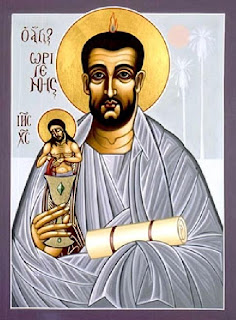My mother-in-law recently celebrated her 70th birthday. The entire "tribe" got together and spent a weekend at the North Sea to celebrate. One part of the celebrations consisted in a Andacht we held in the evening, which consisted of worship and a kind of retrospective of her difficult life. My parents-in-law are Russian-Germans, which means that they are Germans who grew up in Russia under Stalin. A major part of their lives has consisted in persecution, segregation, and deprivation. Throughout this, they have maintained their faith in God and passed this faith on to a new generation. My contribution to the evening was the short "sermon" I held on Psalm 34: 1-11,18-20,23 (plus superscription!). Here it is:
Liebe Alice, lieber Waldemar,
David wurde von Samuel schon im 1. Sam 16 als König gesalbt, nachdem Gott Saul für seine Sünde verworfen hat. Ab diesem Zeitpunkt war David in Gottes Augen schon der wahre König von Israel. Nichtdestotrotz, hat es lange gedauert bevor diese Wirklichkeit sichtbar werden konnte. Inzwischen wurde David von Saul durch ganz Israel gejagt. David musste viel in seinem Leben leiden, und ich kann mir vorstellen, dass es ihm schwer gefallen ist zu glauben, dass er der wahre König war. Er war der König, aber für lange blieb es nur eine Verheißung. Er war schon gesalbt, aber noch nicht eingesetzt. Dieser Psalm ist in dieser Situation enstanden—diese spannungsvolle Zeit zwischen der Verklärung seiner Königschaft und das sichtbare Eintreten dessen Wirklichkeit. Die Geschichte können wir nachlesen im 1. Sam 21:10-15:
Und David machte sich auf und floh an jenem Tage vor Saul und kam zu Achis, dem König von Gat. Da sprachen Achis' Knechte zu ihm: Ist das nicht David, der König des Landes? Ist das nicht der, von welchem sie im Reigen Sangen: “Saul hat seine Tausend geschlagen, David aber seine Zehntausend!” Diese Worte nahm sich David zu Herzen und fürchtete sich sehr vor Achis, dem König zu Gat. Und er verstellte sich vor ihnen und raste unter ihren Händen und kratzte an den Türflügeln, und ließ den Speichel in seinen Bart fließen. Da sprach Achis zu seinen Knechten: Ihr seht doch, daß der Mann verrückt ist? Was bringt ihr ihn denn zu mir? Fehlt es mir etwa an Verrückten, daß ihr diesen Mann hergebracht habt, damit er gegen mich tobe? Sollte der in mien Haus kommen?
Der wahre König Israels sucht Zuflucht vor dem Falschen. Er muss sich vor den Heiden verrückt verhalten, um überhaupt überleben zu können. Was für ein Paradox! Wieso lässt Gott das zu? Irgendwie ist Davids Erfahrung ein geheimnisvolles Muster für alle Kinder Gottes —Königskinder, die so leben müssen, als ob diese Wirklichkeit gar nicht stimmen würde. Laut der Bibel, sind alle von uns in diesem Raum Gottes Kinder. Wir werden eines Tages leuchten wie die Sterne und neben unserem Vater auf Thronen sitzen. Er wird uns eine Krone geben und reine, weiße Kleider. Diese zukünftige Wirklichkeit gilt uns
jetzt. Wir sind jetzt Könige, auch wenn es nicht so aussieht. Auch wenn es leicht ist zu glauben, dass die dunklen Mächten dieser Welt die wahren Herrscher sind. Dieses können wir von David lernen: nicht aufzugeben, an unsere wahre Identität zu glauben; “am Ball” bleiben, in Gehorsam und Vertrauen, bis die Wirklichkeit eintritt.
Aber David hat uns viel mehr zu sagen! Wir können viel mehr von ihm lernen. Nicht nur hat er an der Verheißung festgehalten, trotz seiner alltäglichen Erfahrungen, er hat auch immer wieder “geschmeckt, dass der Herr gut ist” (Ps 34, 9). Auch bevor er König wurde, hat er erfahren, dass der Herr ihm antwortete und ihn errettete (V. 5). Wie David müssen wir oft durch das finstere Todestal gehen, bevor wir endlich ans Ziel kommen. Aber, wie wir in diesem Psalm sehen, gab es immer wieder Hoffnungszeichen. Der Herr handelt! Auch jetzt, vor der Vollendung aller Dinge, kann Gott uns erretten “aus aller unser Furcht” (V. 6). Auch im Jammertal des Lebens gibt es genug Gelegenheiten für unsere Gesichter zu strahlen (V. 6). Wir sind nicht allein und dürfen erfahren, dass Gott wirklich bei denen ist, “die ihn fürchten”.
David hat mal gelitten, mal gejubelt. Und was tut er, wenn er jubelt? In diesem Psalm sehen wir, dass er an diejenigen denkt, die elend sind! Wie er sagt: “Meine Seele rühme sich des Herrn; die Elenden sollen es hören und sich freuen” (V. 3). Seine Heilserfahrung wird zum Anlass, diejenigen zu ermutigen, die immer noch im Dunkeln sitzen. Er kann ihr Leid vielleicht nicht theologisch erklären; er kann keine einfache Antwort geben, wieso sie so elend sind. Aber er kann aus eigener Erfahrung sagen: “Bleib am Ball! Gebt nicht auf! Suchet den Herrn mit aller Kraft und er wird Handeln. Ich weiß es und verspreche es euch!” Und so wird David, durch sein Leid hindurch, zum Vorbild für Andere, die seinen schwierigen Weg noch nicht gegangen sind. Sie können auf ihn schauen und Hoffnung bekommen, dass Gott auch für sie eintreten wird.
Und das, liebe Alice und Waldemar, seid ihr für uns (oder mich zumindest). Ihr habt vielleicht nicht viel gelernt in der russischen Schule, aber ihr habt viel gelernt in der Schule des Lebens—und
Gott war euer Lehrer. Deshalb danken wir euch, dass ihr, wie David, nicht aufgegeben habt, nie vergessen habt, wer ihr wirklich seid und dadurch ein Licht geworden seid für eine neue Generation. Ich hoffe und bete, dass wir das auch werden können für unsere Kinder. Die Welt braucht solche Menschen.














